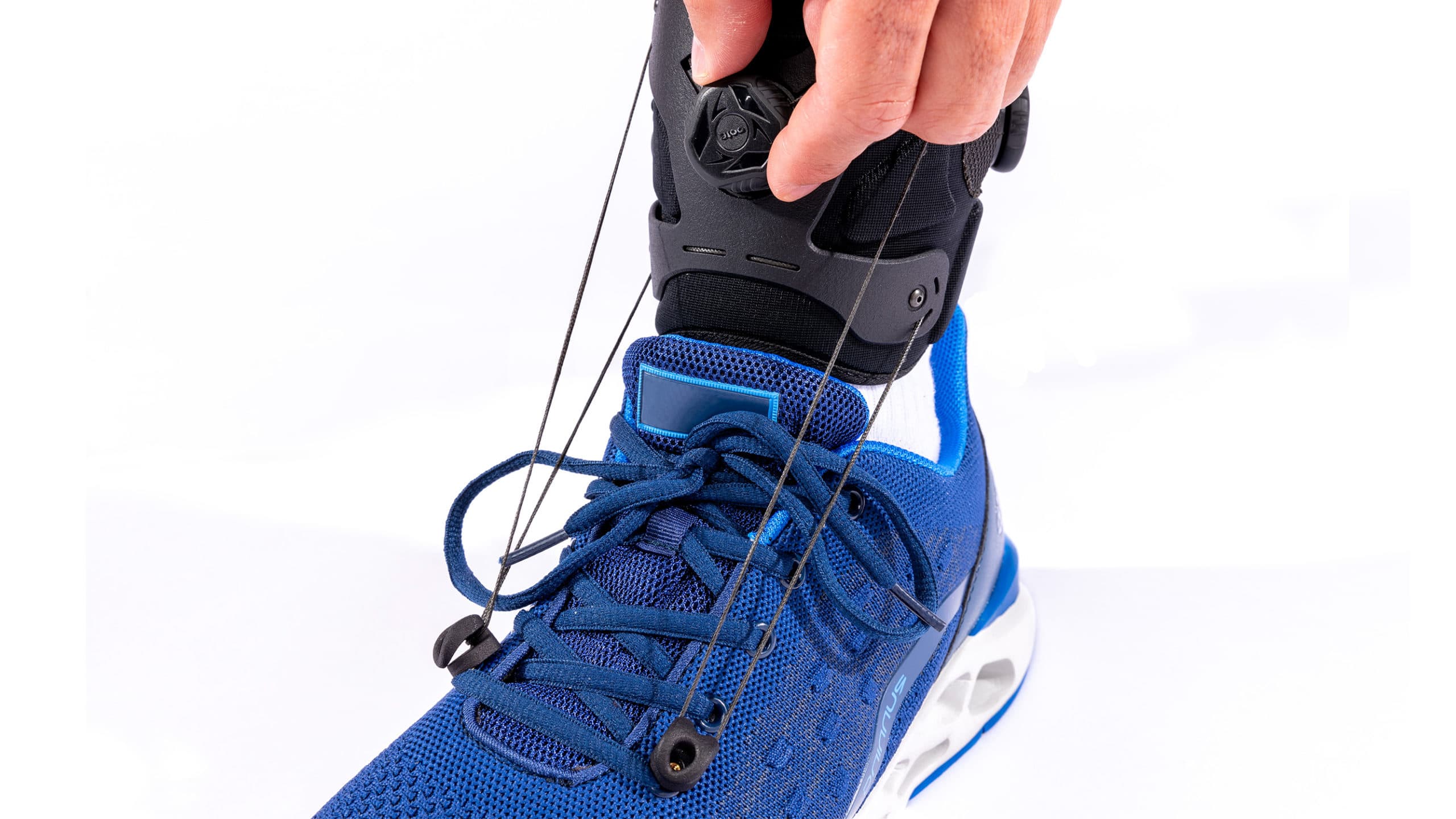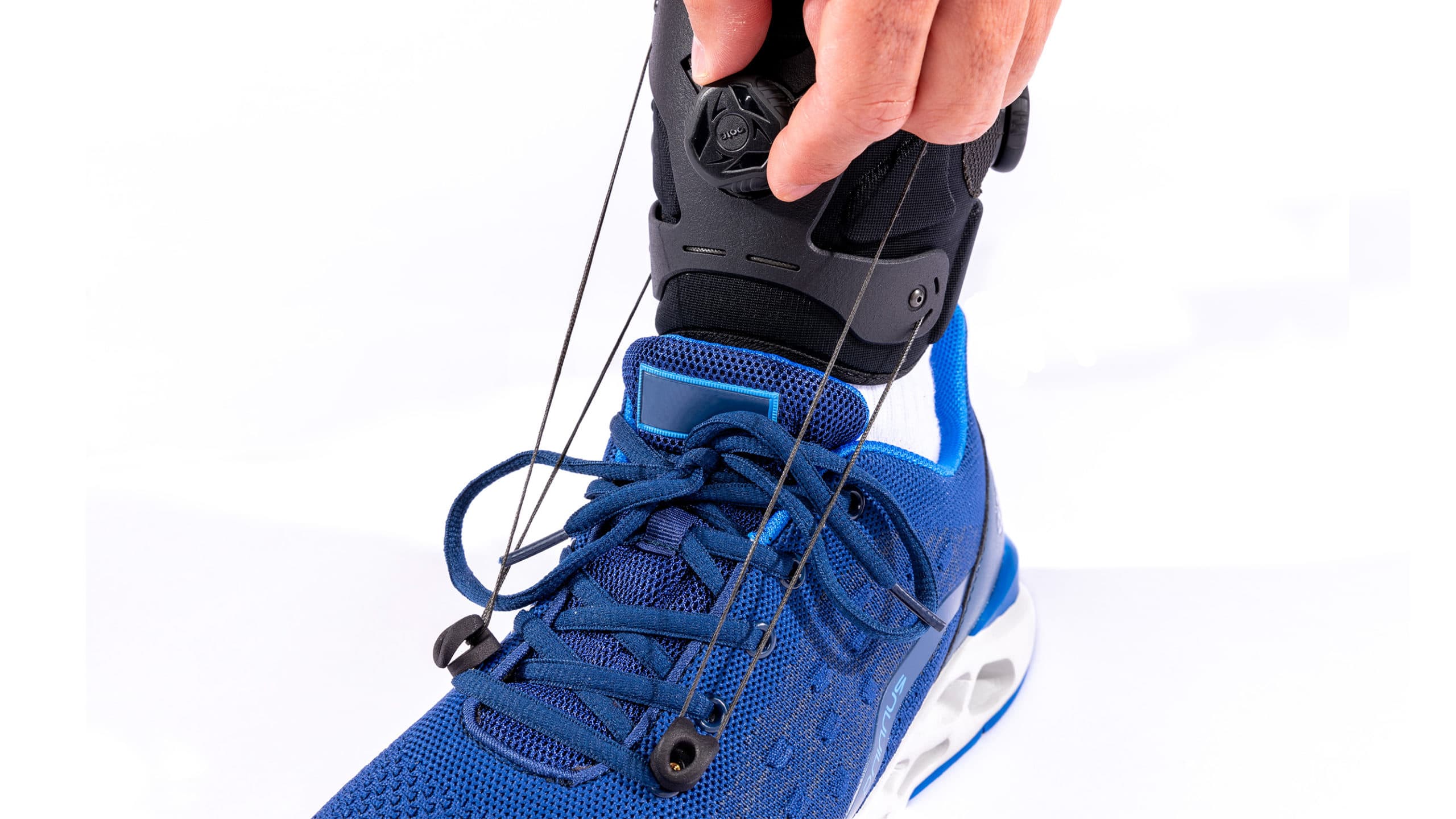
Recovering from Foot Drop: The Benefits of Foot Drop Braces
Often, a client experiencing foot drop will try to compensate for this impairment by hiking their hip or bending their knee more so they don’t drag the foot. This is known as “steppage gait,” and because the compensation movements are abnormal, it can lead to worsening back problems.
Clients can manage and often overcome foot drop by using supportive foot-drop braces like the SaeboStep.
How does the SaeboStep assist with foot drop recovery?
 The SaeboStep helps its wearer to completely lift their foot when walking and provides optimum foot clearance and support. Unlike traditional foot-drop braces, the SaeboStep is lightweight and attaches to the outside of most shoes. It was designed to replace uncomfortable or bulky splints that go inside the shoe, as well as poorly manufactured braces designed for the outside of the shoe that lack support and durability.
The SaeboStep helps its wearer to completely lift their foot when walking and provides optimum foot clearance and support. Unlike traditional foot-drop braces, the SaeboStep is lightweight and attaches to the outside of most shoes. It was designed to replace uncomfortable or bulky splints that go inside the shoe, as well as poorly manufactured braces designed for the outside of the shoe that lack support and durability.In addition to the SaeboStep, there are other ways to ease the problems associated with foot drop, though how effective they are depends upon the severity of a client’s condition.
What are some of the other treatment options for foot drop?
In order to keep the foot neutral and stop the toes from dragging when walking, most people with foot drop need an Ankle Foot Orthosis (AFO). AFOs are traditionally made of plastic and surround the ankle joint and either all or most of the foot. Typically, they are worn inside of the shoe. AFOs of this style are usually uncomfortable and bulky.
Functional electrical stimulation can also be used to assist with walking. A small device can be worn or surgically implanted just below the knee that will stimulate the normal function of the nerve, causing the muscle to contract and the foot to lift while walking.
In addition to an AFO, brace, or electrical stimulation device, therapy will likely be prescribed to strengthen the foot, ankle, and lower-leg muscles. Foot-drop exercises will also prevent stiffness from developing in the heel. For severe or long-term cases, surgery to fuse the ankle or foot bones may be possible.

Why is the SaeboStep better than equivalent products?
One of the biggest benefits the SaeboStep has over similar products is that it’s more cost effective. This is not only because of the affordable price; it is also because the SaeboStep is worn outside the shoe and can be worn with nearly every shoe you already own, unlike bulky AFOs that require you to purchase larger shoes. The lightweight and low-profile SaeboStep is also easier to don and more comfortable.
Which conditions is the SaeboStep best for, specifically?
Individuals with the diagnoses below (but not limited to them) may benefit from using the SaeboStep:
- Stroke or brain tumor
- Traumatic brain injury
- Spinal cord injury
- Multiple sclerosis
- Guillain-Barré
- Cerebral Palsy
- ALS
- Lower-back injuries such as herniated discs or spinal stenosis
- Parkinson’s Disease
- An injury to the lower leg or foot
- Diabetes
- Peripheral nerve injury
Why did Saebo design this product?
Before the SaeboStep, there were no products on the market that safely lifted the foot and were affordable, low-profile, comfortable, and aesthetically pleasing.
What benefits does this give to stroke survivors recovering at home?
Because the SaeboStep is low profile and can be worn with most shoes, patients are able to use the SaeboStep any time that they are walking with shoes on. This results in greater compliance, leading to safer ambulation. Because patients can order the SaeboStep directly, it also allows them to experience immediate results.
What symptoms should I look for to know I need the SaeboStep? When should I get it?
The SaeboStep is designed for individuals who have had injuries resulting in limited lower-extremity movement and function that lead to difficulty raising the foot. It is also recommended for individuals with ankle/foot weakness and/or decreased foot sensation leading to decreased coordination.
Patients should get the SaeboStep as soon as they notice any difficulty with properly lifting their toes or foot when walking or experience dragging of their foot. Patients do not need a doctor or therapist to order the SaeboStep. They can simply visit www.Saebo.com to find what they need.
All content provided on this blog is for informational purposes only and is not intended to be a substitute for professional medical advice, diagnosis, or treatment. Always seek the advice of your physician or other qualified health provider with any questions you may have regarding a medical condition. If you think you may have a medical emergency, call your doctor or 911 immediately. Reliance on any information provided by the Saebo website is solely at your own risk.
All content provided on this blog is for informational purposes only and is not intended to be a substitute for professional medical advice, diagnosis, or treatment. Always seek the advice of your physician or other qualified health providers with any questions you may have regarding a medical condition. If you think you may have a medical emergency, call your doctor or 911 immediately. Reliance on any information provided by the Saebo website is solely at your own risk.


